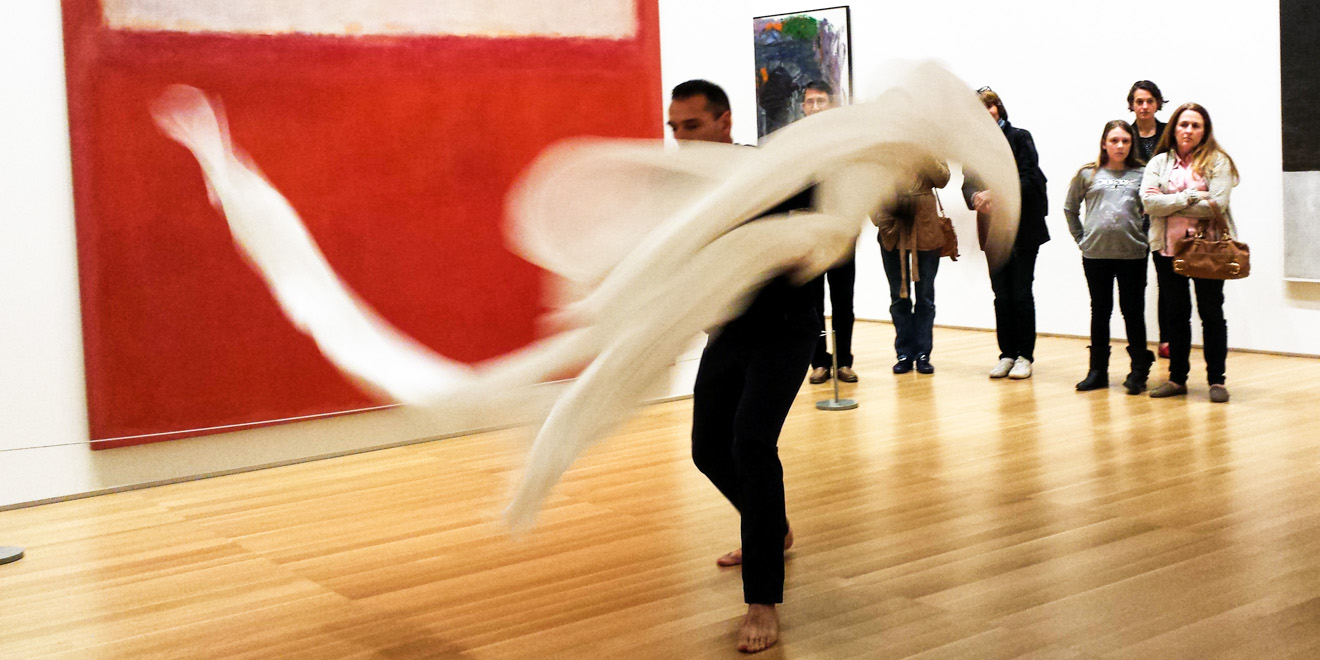
This past Friday, the Anderson Collection hosted a talk entitled “Animating the Inanimate,” during which artist Basil Twist spoke about his abstract experiments in puppetry and visual arts. Twist is a San Francisco-born, New York-based puppeteer brought in by the Stanford Arts Institute as part of the Mohr Visiting Artist Program. He is acclaimed for performance pieces, including “Symphonie Fantastique” and “The Rite of Spring,” which is a ballet that does not feature any dancers.
A graduate of the École Supérieure Nationale des Arts de la Marionnette — a school of puppetry — in France, Twist believes puppetry is a marginalized and misunderstood art form. He explains that the intention of animating something — not just humanoid marionettes — makes a performance piece puppetry.
Taking after the abstraction that defined American art in the 20th century, Twist strives to emulate pure color and pure shape in his work. He utilizes materials such as cloth, tinsel and paper to explore the concepts of form, shape and motion without anthropomorphizing his “puppets.” The American puppeteer observes that his materials are “not trying to look like anything, just being the materials themselves.” His distinctive approach to puppetry, which features the manipulation of everyday objects, prompts us to view these items in ways we usually do not.

Twist’s creative process involves visualization of movement and experimentation with materials like cardboard and silk — juxtaposing the visual properties of hard and soft materials. By playing around with different media, Twist acquires a vocabulary of visual effects that he can incorporate into his performances. The stage, then, becomes Twist’s playground.
One of Twist’s most acclaimed works, “Symphonie Fantastique,” is performed underwater in an aquarium. The piece intends to create a dynamic show of swirling color and form using materials like feathers, glitter, plastics, vinyl and mirrors. In his rendition of “The Rite of Spring,” commemorating the 100th anniversary of the original ballet, Twist incorporates a full orchestra into his performance to accompany billowing sheets of multicolored silk. The human body does not feature prominently in Twist’s work but rather is a side character in the narrative that he creates.
Twist concluded his presentation by giving a live performance of his puppeteering. With Rothko’s “Pink and White over Red” as his backdrop, Twist commanded the floor, armed with a translucent white expanse of silk cloth. Puppeteering is an art form that engages the entire body, as Twist quickly made apparent. Breathing heavily, Twist coaxed the material to form mesmerizing loops and spirals with powerful swings of his arms. At the end of his demonstration, Twist beckoned the crowd to give the cloth a standing ovation, placing the focus back onto his inanimate performer.
By sharing both himself and his work with students, Twist goes a long way towards shattering preconceived notions of what puppeteering should be.
Contact Eric Huang at eyhuang ‘at’ stanford.edu.
